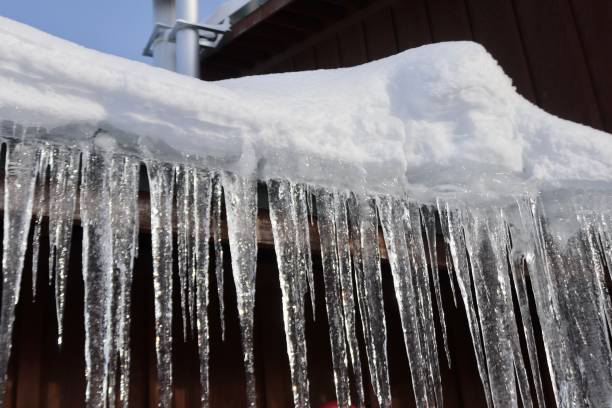Important Tips to Prevent Frozen Plumbing in Winter: Professional Insights
Important Tips to Prevent Frozen Plumbing in Winter: Professional Insights
Blog Article
We have noticed this post about Helpful Tips to Prevent Frozen Pipes this Winter below on the internet and believe it made good sense to talk about it with you in this article.

Cold weather can damage your pipes, specifically by freezing pipelines. Right here's exactly how to avoid it from happening and what to do if it does.
Introduction
As temperature levels decrease, the danger of frozen pipelines increases, possibly causing costly repairs and water damages. Comprehending how to stop frozen pipelines is vital for property owners in cold climates.
Recognizing Frozen Pipelines
What triggers pipelines to ice up?
Pipes freeze when exposed to temperatures listed below 32 ° F (0 ° C) for extended periods. As water inside the pipes ices up, it broadens, putting pressure on the pipeline wall surfaces and potentially creating them to rupture.
Risks and problems
Frozen pipelines can cause water disturbances, residential property damage, and pricey repair work. Ruptured pipes can flooding homes and cause substantial architectural damage.
Signs of Frozen Water Lines
Identifying frozen pipelines early can stop them from breaking.
Just how to identify icy pipelines
Look for decreased water flow from faucets, unusual smells or sounds from pipelines, and noticeable frost on subjected pipes.
Prevention Tips
Insulating susceptible pipes
Cover pipelines in insulation sleeves or utilize heat tape to protect them from freezing temperature levels. Concentrate on pipes in unheated or exterior locations of the home.
Heating techniques
Keep indoor areas appropriately warmed, particularly locations with plumbing. Open cupboard doors to allow cozy air to circulate around pipelines under sinks.
Safeguarding Outdoor Pipes
Garden tubes and outdoor taps
Disconnect and drain pipes yard hose pipes prior to winter season. Install frost-proof spigots or cover exterior faucets with protected caps.
What to Do If Your Pipes Freeze
Immediate actions to take
If you suspect frozen pipes, maintain taps available to ease pressure as the ice thaws. Utilize a hairdryer or towels soaked in warm water to thaw pipes slowly.
Long-Term Solutions
Structural modifications
Take into consideration rerouting pipelines away from exterior walls or unheated areas. Add additional insulation to attics, cellars, and crawl spaces.
Updating insulation
Purchase high-grade insulation for pipelines, attic rooms, and wall surfaces. Correct insulation helps maintain consistent temperature levels and reduces the threat of icy pipelines.
Final thought
Avoiding frozen pipelines calls for proactive actions and fast actions. By comprehending the causes, indicators, and preventive measures, property owners can protect their pipes during cold weather.
5 Ways to Prevent Frozen Pipes
Drain Outdoor Faucets and Disconnect Hoses
First, close the shut-off valve that controls the flow of water in the pipe to your outdoor faucet. Then, head outside to disconnect and drain your hose and open the outdoor faucet to allow the water to completely drain out of the line. Turn off the faucet when done. Finally, head back to the shut-off valve and drain the remaining water inside the pipe into a bucket or container. Additionally, if you have a home irrigation system, you should consider hiring an expert to clear the system of water each year.
Insulate Pipes
One of the best and most cost-effective methods for preventing frozen water pipes is to wrap your pipes with insulation. This is especially important for areas in your home that aren’t exposed to heat, such as an attic. We suggest using foam sleeves, which can typically be found at your local hardware store.
Keep Heat Running at 65
Your pipes are located inside your walls, and the temperature there is much colder than the rest of the house. To prevent your pipes from freezing, The Insurance Information Institute suggests that you keep your home heated to at least 65 degrees, even when traveling. You may want to invest in smart devices that can keep an eye on the temperature in your home while you’re away.
Leave Water Dripping
Moving water — even a small trickle — can prevent ice from forming inside your pipes. When freezing temps are imminent, start a drip of water from all faucets that serve exposed pipes. Leaving a few faucets running will also help relieve pressure inside the pipes and help prevent a rupture if the water inside freezes.
Open Cupboard Doors
Warm your kitchen and bathroom pipes by opening cupboards and vanities. You should also leave your interior doors ajar to help warm air circulate evenly throughout your home.

As a devoted person who reads on How to Prevent Your Pipes From Freezing, I assumed sharing that piece of writing was valuable. Sharing is nice. You never know, you might be doing someone a favor. Thanks a lot for going through it.
Visit My Web Page Report this page